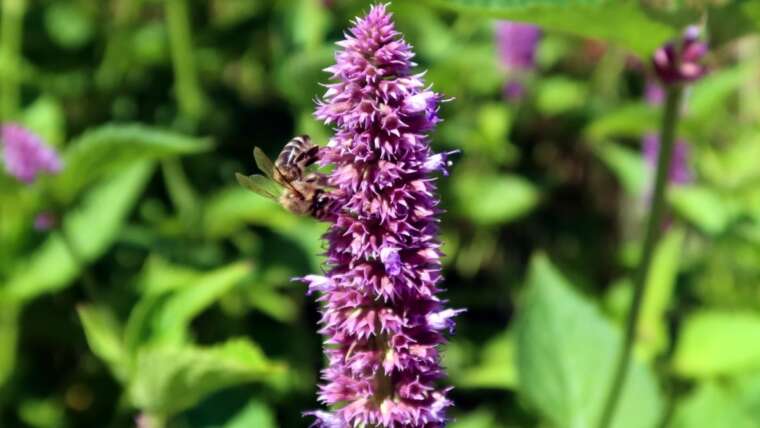Citrus leafminer (Phyllocnistis citrella Stainton) is a common citrus pest for growers worldwide. As the name suggests, this pest creates unsightly tunnels under the surface of leaves. Although it originated in Asia, the citrus leafminer has spread to all citrus-growing regions along with the popularity of citrus fruits. In the United States, the first documented case of this pest was in Florida in 1993 and is now found in Texas, southern California, and other citrus-producing states. Elsewhere around the world, it can be commonly found in Africa, South America, and the Caribbean.
Phyllocnistis citrella Stainton is a light-colored moth in the Gracillariidae family. The mining or tunneling of citrus leaves is caused by the larvae of these months. Another closely related species of moth, the citrus peelminer (Marmara gulosa), is also a common citrus pest. As its name indicates, this pest mines citrus peel rather than leaves.
Out of over thirty insect pests that can impact citrus cultivars, the leafminer is not considered a critical threat, unlike other leaf miner species. Studies have shown that leafminers do not cause significant damage to the fruit yield of mature citrus trees (over four years old), but might stunt the tree growth of young trees or nursery stocks. This is due to the decrease in the photosynthetic activity of a mined leaf. However, the citrus leafminer creates openings that render the citrus trees more susceptible to other citrus pests like the citrus canker bacteria. Natural enemies of this pest keep larger citrus leafminer populations in check so it’s important to take care when using chemicals so as to not harm them.
Good Products At Amazon For Citrus Leafminer Control:
Citrus Leafminer Overview
Phyllocnistis citrella larva. Source: Jeffrey W. Lotz
| Common Name(s) | Citrus leafminer, citrus leaf miner, CLM, citrus serpentine miner |
| Scientific Name(s) | Phyllocnistis citrella Stainton |
| Family | Gracillariidae |
| Origin | Asia |
| Plants Affected | Citrus: oranges (C. sinensis), mandarins (C. reticulata), lemons (C. limons), grapefruits (C. paradisi), limes (C. latifolia), kumquats (C. japonica), calamondin (C. mitis)Non-citrus: Orange jasmine (Murraya paniculata), boxthorn (Severinia buxifolia) |
| Common Remedies | Handpick heavily infected leaves and manage the flush of new leaves. Spinosad and horticultural oils can be used during the flush. Most of the time, this pest is a nuisance instead of a serious concern so it might be best not to take additional measures. |
What Are Citrus Leafminers?
Phyllocnistis citrella Stainton, whose common name is often abbreviated to CLM, is a small, silvery-white moth that only grows to around 2 mm in length with a wingspan of around 5 mm. While they can be seen with the naked eye, they typically go unnoticed because of their size. This tiny moth has wings streaked with brown and white markings that end in a distinctive black spot on each wingtip. They are nocturnal and most active from dusk to dawn which is when mating occurs. During their lifespan of around 2-12 days, adult females will mate and lay up to 50 eggs on the underside of young citrus leaves, near the midrib or veins. Each egg looks like a tiny water droplet. A single leaf can be affected by multiple larvae. Older leaves are not as vulnerable because they have hardened and are difficult for larvae to penetrate.
Life Cycle Of Citrus Leafminer
Female leafminers initially produce tiny eggs that can take between 4 to 10 days to hatch, depending on weather conditions. The light yellow larva will begin feeding and tunneling beneath leaf surfaces as soon as it hatches. The citrus leafminer larva undergoes four developmental instars: three feeding and one non-feeding prepupal stage. Each instar can take between 10 to 19 days based on the temperature. During its final instar, the larva travels to the edge of the leaf and exits the mine. This action creates a slight curling of the leaf in which the larva develops into a light-brown prepupa and then a dark brown pupa. The citrus leafminer develops in its pupa stage for 8 to 20 days before emerging as an adult citrus leafminer moth. Mating begins immediately between male and female adult citrus leafminer moths and the cycle starts again.
Depending on the location, there might be a varied number of leafminers generations per year. In Florida, for example, there is one generation every three weeks. In California, there can be even 7-8 generations per year, and in Pakistan, an astounding 16 generations! Leafminers are attracted to new flushes of leaves on which they can lay eggs. While most of the damage to citrus occurs in late summer and early fall, other plants like California’s coastal lemons, have continuous flushes of new leaves which prolongs the infestation.
Identifying Citrus Leafminer Damage
Leafminer damage is unsightly and often quite alarming for citrus growers. Since citrus leafminer larvae feed on plant tissue, they are known for creating shallow tunnels just beneath the leaf surface in a serpentine pattern. Interestingly, a larva never doubles back or crosses its own tunnel and multiple larvae sharing the same leaf will also never cross their paths. Their damage coincides with the foliage flushing cycles of citrus. As these newly emerged larvae eat through the young leaf, they leave behind a trail of frass or excrement which looks like a thin dark line running down the tunnels. The frass is found only inside mines. These leafminers feed mostly on citrus and citrus hybrids. They can also affect orange jasmine (Murraya paniculata) and boxthorn (Severinia buxifolia). Mature trees are not very affected by the damage and much mature foliage is already too hard for the larvae to eat through.
You may find older leaves with a mined pattern in them. These leaves have once hosted a larva that has since exited. These tunnels are typically necrotic due to the death of plant tissues.
Controlling Citrus Leafminer
 Citrus leafminer trails in a leaf. Source: Erick Lux
Citrus leafminer trails in a leaf. Source: Erick Lux
For mature trees, citrus leafminer rarely causes long-term damages. However, this pest does open wounds that make the trees more vulnerable to more serious pests and will hinder the healthy development of young trees. While the flush growth of citrus trees attacked by leafminers might look alarming, sometimes the best course of action is to leave them alone. There are many natural enemies of the citrus leafminer that will keep their population in check so it is important to protect bees and not accidentally kill beneficial insects by using harmful chemicals.
Organic Citrus Leafminer Control
Products that contain the popular vegetable insect control spinosad have shown some effectiveness against citrus leaf miners. For younger trees, apply the product following the instructions on the packing and spray only the young leaves that are vulnerable to moths. Spinosad does not remain on the plants for a long time and will need to be reapplied every few weeks and after heavy rains.
Horticultural oil, including neem oil, is also sometimes used by commercial and home growers during the flush and sprayed on developing leaves. The oils may help inhibit eggs from hatching. Continue to spray the leaves for 10-14 days until they have hardened and stop spraying once the temperatures reach above 80ºF.
Cultural Control Of Citrus Leafminer
Citrus growers may use sex pheromone sticky traps to monitor the pest population but these traps only attract males. While these traps alone are not enough to suppress the pest population, they can provide an estimation of the degree of infestation. If you need help identifying the insects on your sticky traps, you can send the traps to your local extension office or the county agricultural commissioner’s office.
Hand-picking heavily infested leaves is common cultural control to keep down leafminer populations. Leaves that have been picked can be dropped into a bucket of soapy water to drown the larvae. Avoid pruning too many leaves since the undamaged parts or leaves can still photosynthesize. Also, avoid pruning live branches of citrus trees more than once per season and do not apply nitrogen fertilizer when there is a large infestation of citrus leafminer. Both of these actions will disrupt the cycles of flushing for citrus trees and exacerbate the pest issue. Vigorous shoots might develop above the graft union of mature trees. These shoots can attract adult moths to lay eggs. Removing these shoots can help deter the adults.
The optimal condition for leafminer infestations is between 75-80ºF and relative humidity of over 60%. In inland California, for example, high summer temperatures prevent heavy leafminer populations. They are more likely to thrive in cooler, coastal environments. However, this is a pest that has the potential to spread geographically with the rise in global temperatures, particularly in the spring and autumn.
Biological Control Of Citrus Leafminer
It is important to protect the natural enemies of the citrus leafminer such as several species of parasitic wasps. These wasps, including Ageniaspis citricola and Cirrospilus coachellae, will lay eggs directly in the leafminer tunnels. Once the eggs of these wasps hatch, their larvae will consume the citrus leafminer larvae. These natural enemies typically do not need to be introduced into the environment since they are already present. In Florida, for example, natural enemies account for over 50% of the death of these larvae.
Other Insecticidal Controls
It may be overkill to use additional chemical control to manage this pest due to the potential harm they pose to natural enemies of the citrus leafminer. Many of these insecticides are not effective because it is hard to reach under the surface of leaves into the tunnels and make contact with the larvae.
Frequently Asked Questions
 The frass or citrus leafminer poop darkens the inside of the trails. Source: Gavin Anderson
The frass or citrus leafminer poop darkens the inside of the trails. Source: Gavin Anderson
Q: How do you get rid of citrus leafminers?
A: This pest is not a serious threat to older trees and will typically only attack young leaves. Handpick infected leaves when you spot mining damage and take care not to use harsh chemicals that might cause harm to their natural enemies. These natural enemies should suppress leafminer populations without additional controls. Even young trees can bounce back from a leaf miner infestation.
Q: Do leaf miners spread?
A: Leaf miners are considered an invasive pest because of their rapid spread beyond Asia. There might be multiple generations per growing season so the longer the pest population is left unchecked, the faster they might reproduce.
Q: What do leaf miners turn into?
A: Leaf miner larvae turn into small, light-colored moths with white iridescent forewings and hind wings that have a telltale black dot at the wingtips.
Q: Can you eat plants with leaf miners?
A: Leaf miners do not directly impact citrus fruits since it tends to attack leaves during the flush growth period. Kaffir lime is one of the few citrus tree species consumed for its leaf. If you do happen to eat a leaf infected with leaf miner, it would not cause you any harm other than the gross factor.
Q: How long does it take leafminer eggs to hatch?
A: Adult females mate and lay eggs immediately after they emerge from their pupa stage. Leafminer eggs hatch between 4 to 10 days depending on the temperature.
The Green Thumbs Behind This Article:




